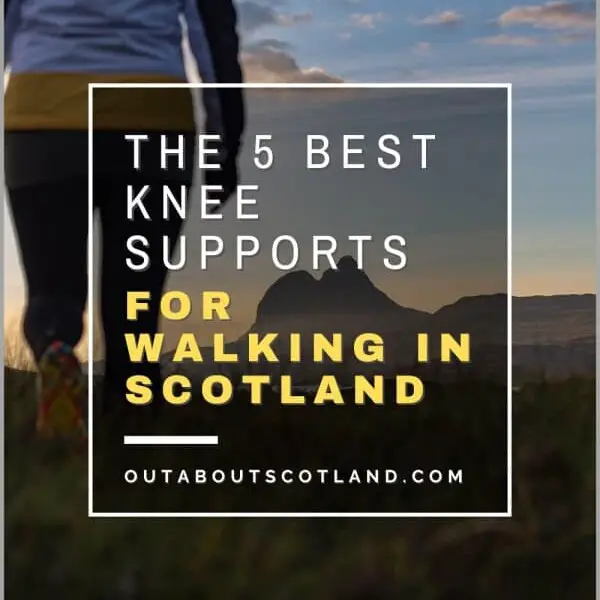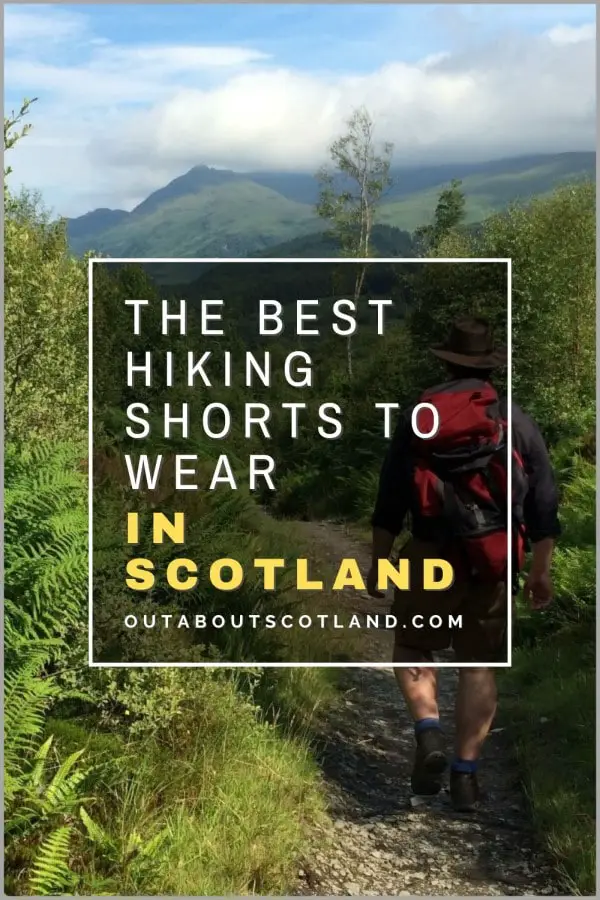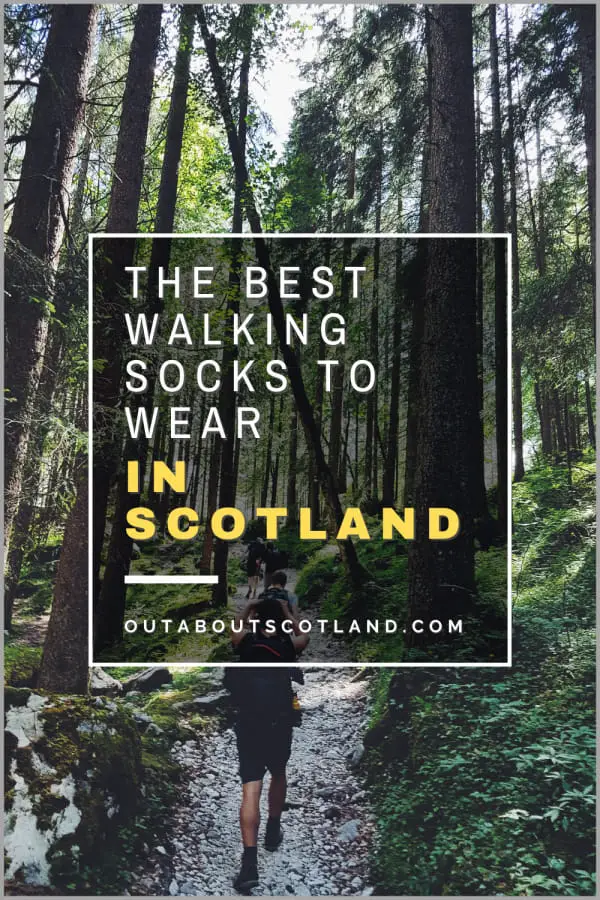Scotland is an incredibly popular destination for walking thanks to the jaw-dropping scenery of our stunning mountain ranges, but those prolonged climbs put a lot of pressure on our vulnerable joints.
There are a number of causes of knee aches and pains—aging, sports injuries, repetitive movements at work—but what I’m going to cover in this article is the knee pain that’s most often felt when hiking. Knee pain is one of the most common ailments for long-distance hikers and leisure walkers, and here in the UK, 1 in 5 adults suffers from it, with that number increasing to 1 in 4 in the US.
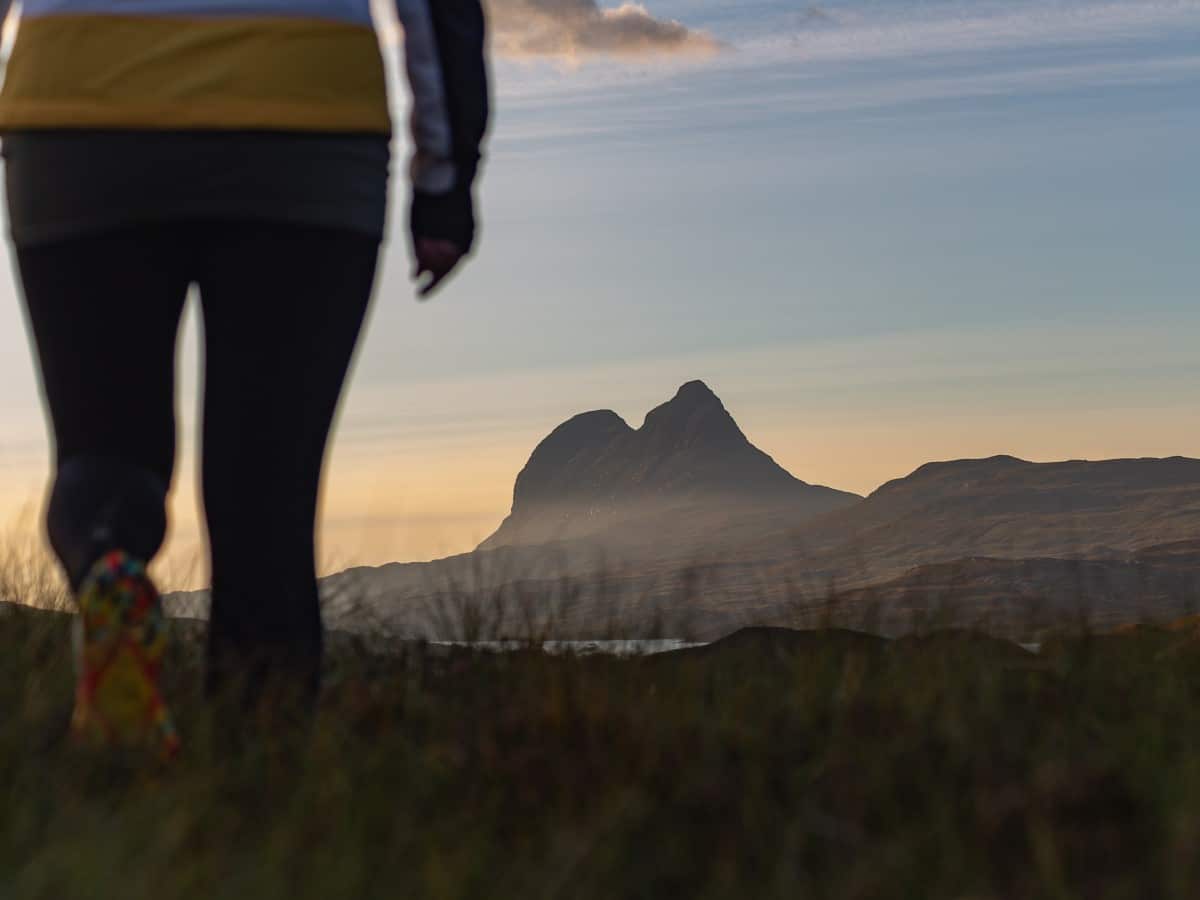
Thankfully, there are a number of over-the-counter products that can help to protect our knees from the stresses of walking, including the main topic of this article – knee supports. These supports come in a wide variety of styles (sleeve, strap, wraparound, open patellar), but they all serve the same purpose, which is to provide compression around the knee joint, which in turn helps to support the knee and control pain and swelling.
As helpful as these supports and braces are, there are almost too many options to choose from, which is why (as a long-time user) I’ve created a list of 5 recommended knee supports for walking in Scotland that you can buy from Amazon today.
In a hurry? If you don’t have time to read the reviews, follow the link below to purchase my #1 recommended knee support on Amazon.
Recommended knee support for walking and hiking in Scotland: Bracoo Adjustable Compression Open Patellar Support
What’s inside a knee?
We all know what a knee is, but not everyone knows what’s inside these vital but easily damaged parts of the body.
The patella, also referred to as the kneecap, covers the tibia (or shin bone) and the femur (or thigh bone), which are the two bones that make up the knees. The joint of the tibia and femur comprises a protective layer of cartilage that absorbs shocks from everyday activities such as kneeling and walking, but over time this cartilage can wear away, leading to inflammation and pain.
In addition, there’s a complex arrangement of muscles, ligaments, and tendons that work together to move the knee when we walk, and these can also become damaged from tears and strains.
When we walk, two sets of muscles (quadriceps on the front of the thigh and hamstrings on the back) bend the leg at the knee, with each muscle joined to the bones by cords of tissue called tendons. Ligaments, meanwhile, connect the bones together, but they also give protection to the knee and provide stability.
All of these parts work together to perform the simple act of putting one foot in front of the other, but if any of them become worn or injured they can make this simple act very difficult, and very painful.
What Types of Knee Injuries Are There?
There are many types of knee injuries, but the most common are listed in the following paragraphs.
Please note that although there’s a huge amount of information about knee pain treatments on the internet, the best place to go for advice (other than your doctor) is the official NHS knee pain page.
Knee fracture. Patellar fractures are very common for people who play sports or are active in their jobs because the kneecap is usually the first part of the body that’s struck during a fall. Patellar fractures are particularly serious as the bone can break into smaller pieces, which can then move out of place, and if not treated properly, the kneecap may require surgery to be repaired.
Causes of fractures to the kneecap usually involve falling directly onto the knee or sudden strikes to it (a car accident, for example) and symptoms include an inability to straighten the leg, severe bruising, and an inability to put weight on the leg.
Kneecap dislocation. If you’ve ever dislocated your kneecap you’ll know what pure agony it is. Normally, the kneecap slides around inside a vertical groove between the shin and thigh-bones, but it can be forced out of the groove in an accident.
When that happens the knee locks and pulls the ligaments out of place which makes walking all but impossible. The patella will sometimes pop back into place on its own, but it usually requires a doctor to relocate it. Signs and symptoms of a dislocated kneecap include an audible pop, intense pain, a sudden swelling around the knee joint, and an inability to walk. It’s also obvious from looking at the knee that the kneecap has moved.
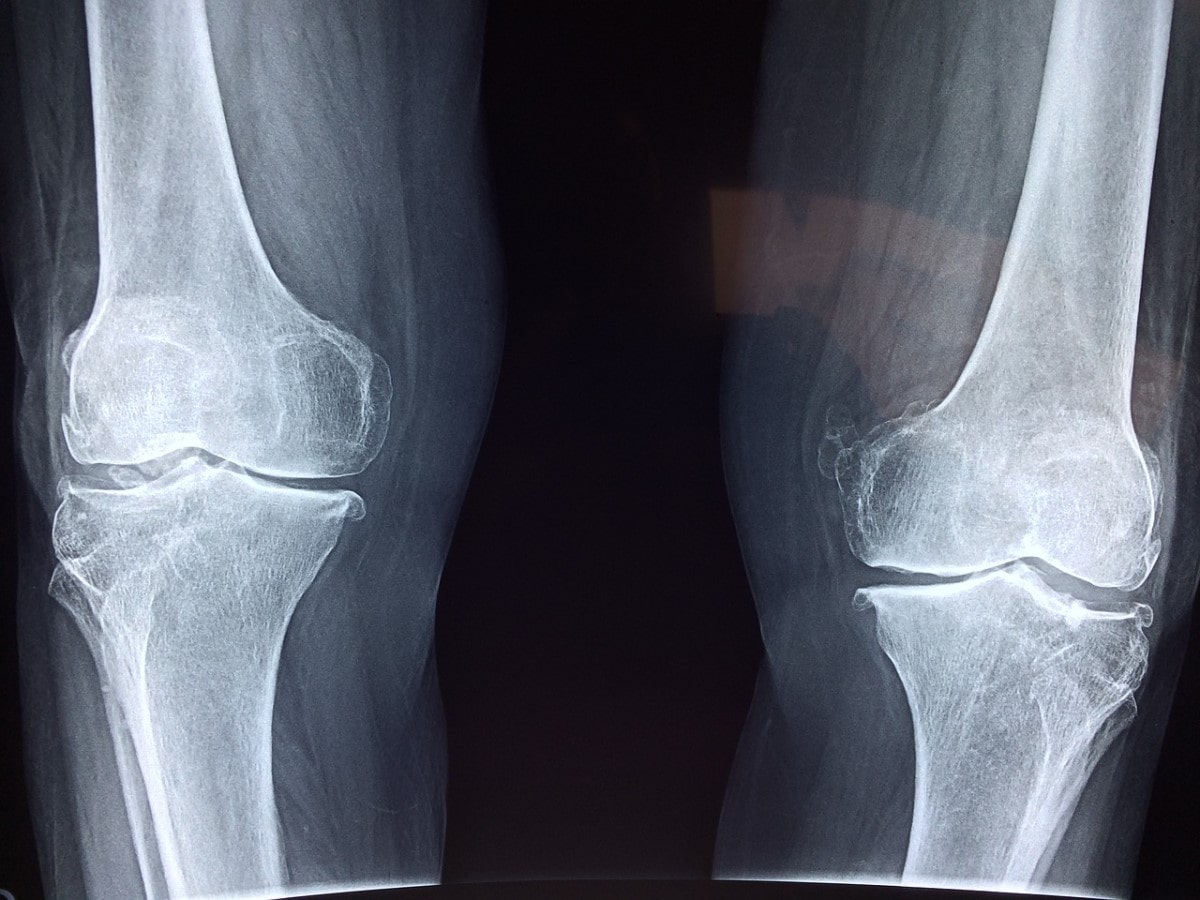
Knee ligament injury. This injury is mostly associated with people who play sports, as it’s usually caused by sudden twisting motions, such as when playing basketball or skiing. Symptoms include a popping sound when the injury happens, an inability to put weight on the leg, and swelling, but unlike kneecap dislocations, ligament injuries don’t always cause pain.
To treat knee ligament injuries the best advice is to take weight off the leg and go see a doctor. The doctor will usually prescribe rest and suggest muscle-strengthening exercises. In the meantime, the knee can be covered with ice (a bag of frozen peas is ideal) and elevated to reduce swelling, and it can also be wrapped in a compression knee support.
Meniscus tear. These injuries are often caused during fast movements, just like ligament strains. The meniscus is a piece of rubbery cartilage between the shin bone and thigh bone that acts like a shock absorber, but when it’s forcibly twisted, it can tear. Symptoms can include severe pain, a swelling of the knee, stiffness in the joint, and it’s usually very difficult to fully extend the leg.
It’s sometimes enough to give the knee lots of rest and cover it with an ice pack to relieve the pain, after which it may heal on its own. The knee may then require physiotherapy to strengthen it and return the full range of movement. If you have a meniscus tear and are in any doubt about what to do to heal it, speak to your GP.
Knee tendon tear. Tendon tears can either be partial or complete, which are exactly as they sound. In a partial tear, the tendon is stretched but is still in one piece, and in a complete tear, the tendon is separated from the kneecap.
Tendons are strong, so these injuries are normally associated with strong forces such as falling from a height (hence the nickname ‘jumper’s knee’).
Symptoms of a knee tear include bruising and tenderness around the joint, difficulty walking, and an indentation at the bottom of the kneecap. Treatments depend on the severity of the tear—partial or complete—and therefore range from keeping the knee immobile for 3-6 weeks to allow it to heal to surgery to reattach the tendon.
Osteoarthritis. Although knee pain becomes more likely the older we get (arthritis being the biggest cause), it isn’t inevitable that every single person will suffer from it.
Arthritis is the natural wearing away of cartilage in the knee which occurs gradually throughout our lives. With every step taken, the knees absorb 1.5 times our body weight which eventually wears away the protective tissues, hence the reason joint pain is worse for people who are overweight. Many factors contribute to the likelihood of developing arthritis, including years of strenuous sport, not being active enough, eating too much unhealthy food, smoking, and not drinking enough water.
While walking is a great exercise, it has been proven that swimming and riding a bike are actually the best ways to keep the fluids moving inside the knee joints without putting undue pressure on them. Yoga and stretching exercises are also good options to keep knees in tip-top condition, as is using an elliptical exerciser like this highly-rated machine from Amazon.
- XS Sports Pro Fitness Elliptical Cross Trainer with Pulse Sensors - 2 in 1 - Can Be Used As A Cross Trainer or Exercise Bike
- Front Mounted Flywheel for Added Stability - Adjustable Resistance for High & Low Intensity Workouts - Multi Function LCD Display: Pulse, Time, Speed, Distance, Calorie & Scan Mode
- Can Be Used to Workout Legs, Hips, Buttocks, Arms & Shoulders - Simulates Natural Walking Movements - Dual Direction Forward & Backward Elliptical Workout - Front Mounted Flywheel for Added Stability
- Steel Frame - Extra Wide Platform Pedals - Large Comfortable Seat - Front Wheels - Easy to Move Around the House - Max User Weight: 110kg - Max Foot Size: 12 (UK Size) - Size of Machine Foot Print Approx 91cm x 51cm - Some Assembly Required - Includes Full English Instruction Manual
- Moving Stride Bars for Upper Body Workouts - Fixed Bars with Pulse Sensors to Monitor Heart Rate During Workout - Total Body Low-Impact Cardiovascular Workout in the Comfort of Your Own Home
Why Use a Knee Support?
Supports and braces offer several benefits for anyone walking in Scotland, whether young and suffering from sports injuries or older and coping with mild arthritis. A knee support is a fabric sleeve that wraps tightly around the knee, compressing the area to reduce swelling while also stabilizing the joint.
Some are made from a stretchy fabric such as cotton, while others use thicker materials such as neoprene. Some have an open section over the patella and are bound with straps, and others are more like a sock that you pull over the knee.
Each type has its pros and cons, but they all come under 5 different categories.
1: Functional braces are most often used by sportspeople who have suffered knee injuries in the past. They stabilize the knee and help to prevent further injuries.
2: Unloader braces are specifically designed to relieve pain in people with arthritis by shifting the body’s weight away from the weakened area of the knee (hence the ‘unloading’ name).
3: Prophylactic braces protect knees during high-risk sports and are therefore mostly used by athletes. Studies into the benefits of prophylactic braces have failed to conclude their effectiveness, so they’re generally not recommended for regular use.
4: Patellar knee straps are narrow strips of tough material that are pulled tight around the knee and fixed in place with Velcro. They are specifically designed to aid injuries to the patellar tendon and therefore do not offer support to the entire knee.
5: Rigid hinged knee braces are overkill for most walking activities as they’re designed to assist in the recovery of serious patellar dislocations and ligament tears, rather than help with mild arthritis. Hinged braces are the most expensive supports as they use very thick material which holds hinged metal brackets in position around the thigh and shin.
6. Knee sleeves are the most common type of over-the-counter support. They are used whenever there’s mild discomfort in the knee joint and are sub-categorized into sleeves (pulled on like an open sock) and open patellar (a sleeve with a hole for the kneecap to sit in, which is pulled tight with Velcro straps).
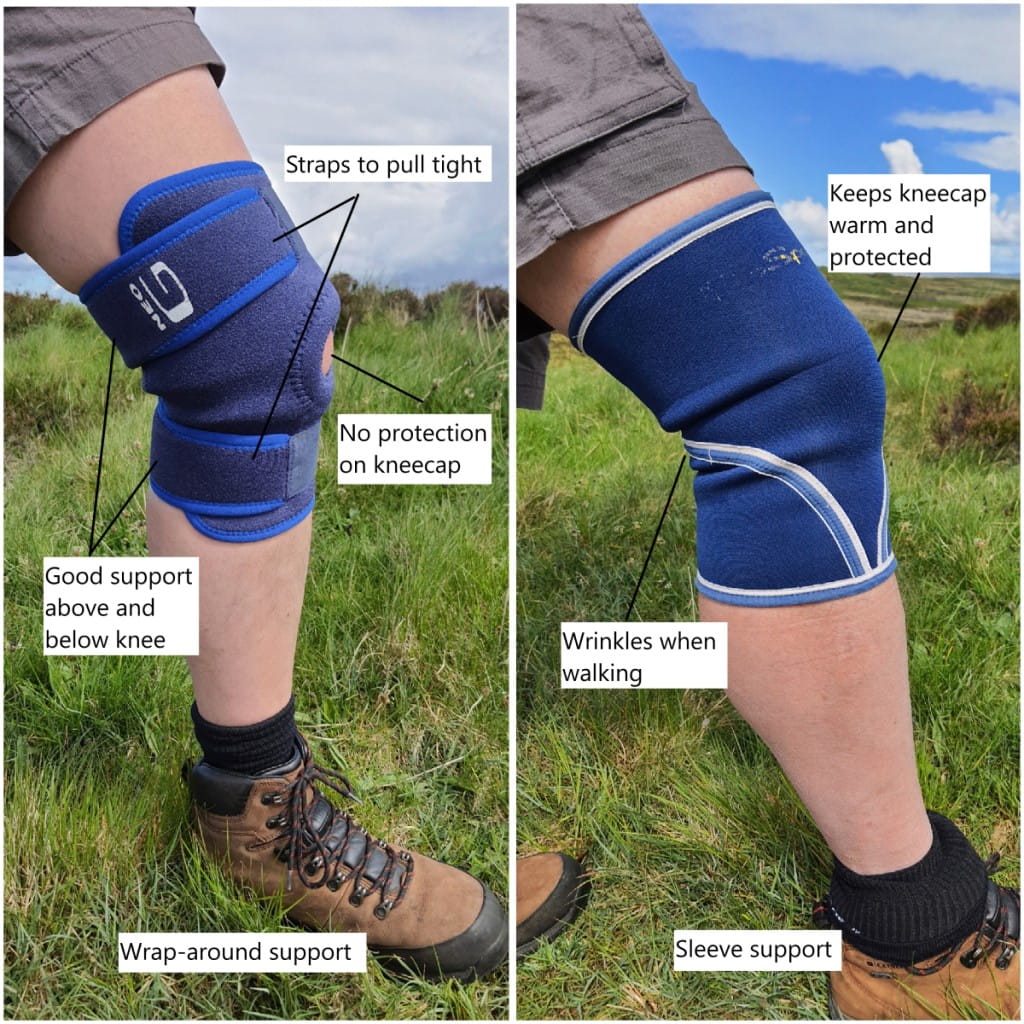
In the majority of cases, the best type of knee support for walking is a sleeve, specifically those with straps that can be pulled tight. The main positive for simple pull-on sleeves is that they provide cushioning directly over the kneecap which is preferable if you take a tumble, and they also keep kneecaps warm – something that’s a major bonus in winter when joints tend to ache in the cold.
With regards to my own personal preference, I found having both sleeve and wrap-around supports allow for use in different situations. For gentle walks or any activity where you might kneel down, use a pull-on sleeve support. When walking or cycling, use a wrap-around support with straps that can be pulled tight.
As far as materials go, there are cotton compression sleeves which don’t provide much support but are breathable and lightweight. Neoprene, meanwhile, is a much sturdier and supportive material but it can make legs uncomfortably hot.
One way to get around the stickiness caused by neoprene is to purchase supports that are advertised as breathable. These supports have hundreds of tiny holes punched into the material that allow heat and moisture to dissipate. I personally haven’t found any neoprene knee supports that don’t make your legs sweat, but the breathable holes definitely help.
Top 5 Knee Supports for Walking in Scotland
Bracoo Adjustable Compression Open Patellar Support
Best Open Patellar Knee Support
Quick disclaimer – I own these knee supports as well as the AVIDDA sleeves listed below. I originally purchased the AVIDDA knee supports and was very happy with them until I started going on long walks, at which point I realized the downfall of pull-on sleeves is that you have to keep re-adjusting them as they slowly ride down your legs.
Not so with these Bracoo open patellar supports thanks to the 3 Velcro straps that can be pulled as tight as you like, ensuring they’ll never move about even on the lengthiest trails. As far as knee support goes, I’d rate them as excellent and only a step below the AVIDDA sleeves, but these are most definitely comfortable and look about a hundred times better when worn with hiking shorts.
To put them on, place the support over the knee and wrap the rear strap around the leg, press the Velcro in position, and repeat for the lower and upper straps. It’s an ultra-easy process that (in my opinion) also makes them the best knee support for elderly walkers.
One bonus with this system is that they can be worn over leggings if you don’t like having anything directly on your bare skin, which is pretty much impossible to do with pull-on sleeves. Once in position, they feel secure and can easily be adjusted for tightness, which is another advantage over sleeves without straps. I also like the embedded side stabilisers and the extra-rigid stabiliser around the kneecap opening.
Pros
- The material feels good quality and I can confirm that after a year of use they’re still going strong.
- Decent cushioning around the kneecap.
- Even though the neoprene is quite thick, these supports don’t make your legs too sweaty.
Cons
- Open-patellar design means no cushioning directly over the kneecap.
- The logos fell off after a couple of months (not a big deal TBH).
- If you don’t properly adjust the third strap on the rear it can cause a wee bit of skin irritation.
- Customisable Open-Patella Design - Popular orthopaedic brace relieves pressure and stress on the knee-joint during exercise; fully adjustable straps can be attached to almost any exterior point helping to prevent slippage and accommodate a broad range of users.
- Reinforced Stabiliser Ring - Ensures the knee cap remains in proper position during flexion and extension, helping to evenly distribute stress across the ACL, PCL, LCL & MCL ligaments; Increased stability leads to improved leg alignment for optimal loading and recovery.
- Relief & Support - Eases chronic and acute knee pain associated with arthritis, strains, sprains and fatigue; use in sports such as walking, hiking, golf, cycling and many more.
- Breathable & Skin-Friendly - Premium-grade neoprene : tiny perforations in the fabric help reduce unwanted moisture, itchiness and odours.
- Universal Fit - Single support, wearable on either the left or right knee - adjustable high-grip strapping fits knees from 12.5" to 18" (32 to 46cm) in circumference.
Avidda Knee Support Brace
Best Knee Support for Arthritis
There are a ton of knee sleeves on Amazon as well as in most high-street chemists, which means it’s a chore to decide which ones to get. Let me save you a load of unnecessary trawling through reviews by suggesting you get these AVIDDA knee supports which I can confirm do a fantastic job of relieving pain in one of my knees which is starting to feel the effects of arthritis.
The main reason I chose these supports is the design which completely covers the kneecap, meaning they help keep away aches in cold weather which is a bonus if you have arthritis. The second reason is the anti-slip silicone strips in the upper band which prevent them from falling down.
Well, they mostly prevent them from falling down. Wearing these knee supports for a short duration is no problem at all, and on short walks of an hour or so they stay in place nicely. Unfortunately, hiking for anything over that means they will need pulling up at regular intervals. It’s not a big deal if you’re wearing shorts, but it’s a wee bit annoying if you’re wearing trousers and have to wait till there’s no one around to go rummaging around down there.
The only other negative I have is the length of these things. With trousers on, they’re hidden away, but with shorts, they look a bit odd as they’re very long and cover a good portion of the shin. Admittedly, that’s a personal preference, and most people won’t care about what they look like while romping around the great outdoors, but if you’re fashion-conscious, it’s something to keep in mind.
As far as doing the job they’re designed for – protecting knees and reducing pain – they’re fantastic and totally deserve their 9,000+ 5-star ratings on Amazon.
Pros
- Good quality material which is thick enough to provide good support to the knee but not so thick they make your legs sweat.
- For sleeve-style knee supports they’re better than most at staying in position.
- Great value for money as you get TWO supports in one pack.
Cons
- A bit long (although that means they offer lots of compression to reduce swelling).
- Not as secure as strap-style supports, and you can’t adjust the amount of compression like you can with straps.
- The design means they’re not suitable to pull over trousers.
- Great Support & Full protection: The Knee Support offers stable pressure across your knee joint, offers optimal muscle support and full protection during your workouts and casual everyday activities. PLEASE TAKE A LOOK AT OUR SIZING CHART AND MEASURE YOUR CIRCUMFERENCE BASE ON OUR INSTRUCTIONS!
- Pain Relief & Injury Recovery: Whether you suffer from intermittent or constant knee pain, the knee brace can give your instant pain relief. Additionally, targeted compression will help encourage blood circulation, reducing inflammation/swelling and speeding up the recovery healing process, including ACL, MCL, or PCL sprain or tear, and others.
- Comfortable to Wear and Anti-slip System: Special knitted technical design with two silicone gel strips, ensuring the knee sleeves stay in place, no matter what you do! The high quality fabric featured in Breathable & Sweat-Absorbing gives you a smooth and soft feel so you can wear them all day long! The compression knee supports fit for both men & women, kids and adults.
- Suitable for Various Sports: Our knee braces are perfect for any activity that involves a great amount of stress on the joints like, Baseball, Basketball, Soccer Golf, gym, Hiking, Running, Tennis, Volleyball and more! You'll be able to enjoy exceptional knee support while still maintaining your peak performance and a full range of leg motion!
- Professional Customer Service: our service team will do whatever it takes to ensure your satisfaction. With any questions or problems about our compression knee sleeves, please feel free to contact us anytime and anywhere via 'Your Account - 'Your Orders' - 'Ask Question'.
Neenca Professional Knee Brace
Best Sports Knee Support
After realizing the AVIDDA supports weren’t so good for long walks – and before I found the Bracoo strap supports – I ordered one of these NEENCA supports from Amazon. Out of all the supports listed in this article, I would have to place these at the #1 position for sports, and they’re among the best knee supports for running that I’ve used to date, and they even cope with a lengthy football session.
The NEENCA supports are advertised as braces, meaning they have embedded strips that strengthen the sides, which help to maintain stability. They also have a nice thick silicone pad around the kneecap, which is covered with material, making them a clever hybrid between knee sleeves and open-patella strap-style supports.
Just knowing there’s a pad around the patella that will absorb some of the impact if you trip is very reassuring, and the fact the stretchy material is breathable and doesn’t make you sweat much is the icing on the cake.
The side braces (they say on the Amazon page they’re metal but they feel like some kind of plastic) would no doubt benefit anyone with tendon injuries, but for mild knee complaints, I feel they’re unnecessary. They’re not uncomfortable as such, but you’re always aware you’re wearing these supports/braces because the material is very thick to accommodate the inserts.
They’re also rather tight (admittedly that’s a design feature to help with reducing swelling) which I personally found annoying after an hour of wearing them. That being said, for anyone with tendon damage or tears to the meniscus which means they can’t go on long walks anyway, these NEENCA knee supports would be my first recommendation.
Pros
- The covered patella pad offers protection while keeping the cold out.
- The stretchy material stays in place better than the AVIDDA supports, but they’re also tighter, which could be a positive or a negative depending on the severity of the knee injury.
Cons
- The side spring braces are advertised as metal, but they’re clearly some type of plastic.
- These braces are around £20 each which is double the price of most alternatives.
Bodyprox Patella Tendon Knee Strap
Best Support for Patellar Tendon Injuries
I have to start this review by saying I do not own nor have ever worn these straps. The reason I’m including them is because I know someone who does own them, and they have nothing but praise for this product.
Around a year ago, my better half’s dad pulled the patella tendon in one of his knees, so I took a look online to get him some support that would aid his recovery. With over 11,000 reviews and an average rating of 4.5 stars, this Bodyprox support is by far the best-rated item on Amazon. They are also very affordable at just over ten pounds for a pair.
Unlike knee braces and supports, these straps are narrow and are designed to sit immediately under the kneecap to compress the patellar tendon.
The quality is impressive, with thick neoprene, sturdy plastic buckles, and durable stitching. Although they’re neoprene they have breathing holes that help to avoid heat rash and the straps are adjustable on both sides, meaning the compression is evenly spaced. Putting them on is a breeze, and they stay in place all day, especially if pulled in tight above the calf muscle.
As far as reducing knee pain goes, by all accounts, they’re exceptionally good at their job. After using a Bodyprox Patella Tendon Knee Strap for less than a week, my OH’s dad was up and about and walking without a stick, virtually pain-free. I can’t say for definite that it was this product that helped with his recovery, but the wearer is convinced it was, which is the best type of recommendation in my book.
Pros
- Small and lightweight.
- Well-made, comfortable, and a bargain at the price.
- Most importantly, they effectively reduced the pain of a damaged tendon.
Cons
- None – for the use they were designed for. If looking for an alternative to a sleeve for arthritis, be mindful that these straps do not provide protection over the kneecap, nor do they insulate the kneecap.
- Thin yet packs a powerful punch! Delivers just the right amount of support to stabilize the kneecap during physical activity. Worn just below the patella, the strap helps control the effects of muscular vibration during repetitive impact to reduce fatigue and decrease the risk of injury.
- Made with a durable blend containing rubber, cotton, spandex & nylon for support that lasts. Quality Velcro straps are adjustable on both sides for a non-slip grip that won’t loosen over time. The interior features hexagonal ventilation holes to release excess heat, maintaining an ideal degree of muscle warmth without perspiration.
- Designed for knee pain & stiffness, arthritis, menisci and cartilage damage, patellar tendonitis and bursitis, torn ligaments and tendons, and even soft tissue and sport-related injuries.
- Offers a boost of support that relieves any discomfort while walking, running, and working out. Thick silicone gel padding flexes with the knee while the Velcro straps adjust to give you the exact amount of compression you need. Great to wear for existing acute pain or to prevent injuries from happening through added support.
- Sold in a pack of 2, one size fits most! Strap measures about 14” long.
Shock Doctor Ultra Knee Support With Bilateral Hinges
Best Knee Support for Cartilage Damage
Shock Doctor manufactures some of the best consumer-grade knee brace supports on the market – as can be seen in the 1,000+ positive reviews on Amazon – though bear in mind this product costs 3 times more than most other premium knee supports.
What you get for your money is an ultra-durable strap system that provides consistent compression across the brace with no pinching of the skin, as well as premium materials that are comfy to wear.
The rear of this product features an integrated flexible mesh that allows the brace to bend without excess material rubbing against the back of the knee, and the padding around the patellar on the front is very thick, very durable, and is best-in-class at providing support.
The dual hinge at the side is metal with all-aluminium stays that provide lateral support, and the bulk of the neoprene material uses a patented design that allows air to flow under it to wick away moisture.
Shock Doctor rates this model as being ideal for minor and moderate sprains, and reviews on Amazon suggest it’s one of – if not the – best knee braces for recovering from knee injuries while providing enough support to continue enjoying light exercise. I would say they are overkill for anyone with mild arthritis who wants to walk in Scotland, but they will be worth their weight in gold for anyone with ligament and tendon injuries.
Pros
- Look on pretty much any review site and you’ll find the Shock Doctor 872 is among the highest-rated consumer-level knee supports available. The material and build quality are all premium, and the stabilization they provide is second to none.
Cons
- These supports are expensive and are therefore a considered purchase, but the number of positive reviews show that you get what you pay for.
- Mild knee aches and pains? These will be too heavy, too hot, and too cumbersome for long walks.
- MAXIMUM SUPPORT: The bilateral support hinges on this ultra supportive knee brace offer you stability and increased performance for existing or preventing injury.
- VERSATILE: Helps prevent and heal ACL/PCL injuries, medial/lateral instability, hyperextension, patella instability, meniscus injuries, ligament sprains and more.
- BOOST MOVEMENT AND COMFORT: Heavy duty construction allows you to move comfortably with four-way stretch spandex/elastane mesh.
- COMFORTABLE FIT: A pre-curved anatomical design fits the left knee or right knee. Ideal for adults and both men and women.
- GREAT FIT FOR SPORTS: The N-Tex air flow vented moisture-wicking neoprene prevents overheating, odor and bacteria. Wear comfortably for a variety of sports or activities.
- PREMIUM MATERIALS: Latex-free, premium stitching, and integrated flexible side stabilizers, stays in place. Includes easy grip tabs for accurate fitting.
- SIZE RANGE: Intended to be close-fitting for the best protection so it may fit small. If your measurements are close to the maximum size range, size up for comfort.
Conclusion
Knee pain is one of the most common health problems for people who enjoy walking, which isn’t surprising considering the tremendous amount of strain this vulnerable part of the body is under.
Problems with knee joints can range from mild aches and twinges caused by natural ageing to full-blown injuries to the tendons and underlying tissues that require surgery. In all instances, it’s best to seek medical advice to determine the optimal treatment for the injury, but in most cases the use of a knee support will help no end in the recovery process.
For anyone who enjoys walking in Scotland, knee supports can be both a preventative precaution and a method of keeping pain at bearable levels – but the support needs to fulfil several criteria.
It has to be durable to cope with lots of use, lightweight and breathable to prevent sweating, strong to provide support, and comfortable so that it can be worn for hours at a time. With those thoughts in mind (and as a long-term user myself), I recommend the Bracoo Open Patellar Compression Support and the AVIDDA Knee Support Brace, both of which are available on Amazon.
Both knee supports provide good protection and extra stability to the knee, both are comfortable, and both are competitively priced. I recommend purchasing them from Amazon using Amazon Prime (sign up for a free trial) which allows free returns if you don’t get on with either product.
Note that all product reviews on this page are the opinion of Out About Scotland and your experience with these products may differ. The information contained in this article is provided for entertainment purposes only and you are encouraged to seek expert medical advice for any issues regarding knee injuries and knee pain.
Frequently Asked Questions
Will a knee brace help with knee pain while walking?
Knee supports can be good pain relievers for anyone that enjoys walking as they provide lateral stability to the knee and support for the patella.
They also offer protection over the kneecap and they can provide insulation for the knee in cold weather.
Users should seek medical advice to determine the best type of support for their injury.
How long should you wear a knee support for?
The length of time to wear a knee support depends upon the injury and the level of day-to-day activity, but typically for ligament and tendon strains, a knee support is worn for 4 to 6 weeks.
For people with arthritis, wearing a knee support can be beneficial every time they go for a walk.
Is a knee support good for arthritis?
Arthritis sufferers often have extra stresses put on their knee muscles, tendons, and ligaments as these parts of the knee have to work harder to support joints with degenerating cartilage.
In these instances, braces offer extra support to the knee which in turn helps to reduce pain.
What sort of knee support do I need?
Before making a purchase, it is crucial to seek medical advice because the severity and type of the injury will determine the best type of knee support.
Braces and supports are generally categorised into 3 levels:
Level 1: Minor pains and sprains, e.g., arthritis, bursitis, tendonitis. Level 2: Minor to moderate ligament strains, swelling, and pain relief from chronic conditions. Level 3: Moderate to major injuries or post-surgical recovery.

